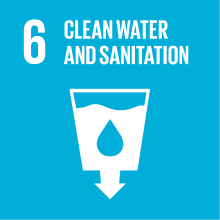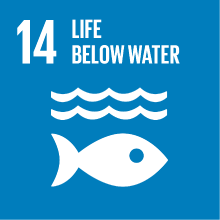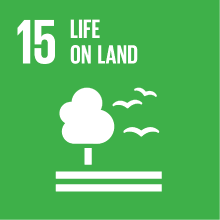MICROBIOLOGY - LAB
- Academic year
- 2025/2026 Syllabus of previous years
- Official course title
- MICROBIOLOGIA - LABORATORIO
- Course code
- CT0369 (AF:608406 AR:256023)
- Teaching language
- Italian
- Modality
- On campus classes
- ECTS credits
- 0 out of 6 of MICROBIOLOGY
- Subdivision
- Class 1
- Degree level
- Bachelor's Degree Programme
- Academic Discipline
- BIO/19
- Period
- 1st Semester
- Course year
- 3
- Where
- VENEZIA
- Moodle
- Go to Moodle page
Contribution of the course to the overall degree programme goals
The secondary educational objectives of the course are: 1) to be able to identify the most appropriate microbiological sampling strategy depending on the environmental matrix to be monitored; 2) to be able to discern any environmental factors that may influence the growth and development of different microorganisms; 3) to stimulate a systemic approach to understanding the microbiological sphere; 4) to identify a cross-disciplinary approach to defining possible methods for using microorganisms; 5) knowing how to process and evaluate the experimental data collected in order to formulate the most appropriate course of action and management of the issue in question, starting from the specific environmental characteristics; 6) instilling precise and appropriate scientific language.
Expected learning outcomes
1.1. Recognize the morphological characteristics that distinguish different microorganisms in order to identify them.
1.2. Identify the physiological elements expressed by different microorganisms in a particular ecological niche, depending on its chemical and physical characteristics, in a specific environmental context.
1.3. Know how to implement the best practical intervention strategy, both in the sampling phase and in the culture phase, as well as in the recognition phase, based on the biochemical-functional characteristics expressed by the site-specific microorganism.
2. Ability to apply knowledge and understanding
2.1. Know how to recognize microorganisms according to taxonomic and functional keys, as well as their interactions.
2.2. Ability to distinguish abiotic components and site-specific environmental factors as drivers of the microbiological colonization process.
2.3. Ability to identify an intervention strategy, taking into account the chemical-physical properties of the matrices involved, to manage a microbiological colonization process.
3. Judgment skills
3.1. Ability to focus on the influence of the growth matrix in order to interpret, critically evaluate, and discuss the results of experimental analyses aimed at identifying and characterizing microbiological processes.
3.2. Ability to systematically compile the microbiological and chemical-physical-biological-environmental information collected, even in an experimental context.
3.3. Ability to evaluate the microenvironment, also in order to provide the most profitable and sustainable intervention.
4. Communication skills
4.1. Ability to communicate the knowledge acquired and the results in a coherent and rigorous manner, using appropriate scientific language.
4.2. Ability to interact with the teacher and classmates in a respectful and constructive manner.
5. Learning skills
5.1. Ability to take notes, demonstrating autonomy in the practical management of theoretical concepts already learned, as well as the focal points of laboratory experiments.
5.2. Ability to research and use reference texts and bibliographies.
5.3. Ability to explain the results of a microbiological analysis with the ability to contextualize.
Pre-requirements
Contents
- Working with microorganisms: safety during sampling and in the microbiology laboratory.
- Typical equipment in a microbiology laboratory: laminar flow hoods, autoclaves, filtration racks, sterilization systems, incubators.
- Preparation of culture media: liquid, semi-solid, agarized; simple, complex, generic, selective, elective, chromogenic, dehydrated. Use of natural and synthetic biocides.
- Evaluation of: CFU and texture; biofilm.
PART II
- Gram staining.
- Active and passive microaerobiological sampling of air.
- Preparation of stained slides of bacteria and fungi using different procedures.
- Induction of pseudoife in yeast.
- Isolation of microorganisms from liquid samples using filter membrane technique.
- Serial dilutions of liquid samples; inoculation on solid medium by smear and spatula.
- Preparation of antibiograms with natural and synthetic biocides.
PART III
• Use of optical microscope and stereomicroscope for microbiological samples.
• Observation of Petri dishes already inoculated with different techniques.
• Morphological observation (texture) and CFU counting.
• Creation of indoor/outdoor, passive/active indices.
• Observation of fixed and/or stained slides and preparation of fresh slides.
• Macro and micro recognition of bacterial, fungal (yeasts and molds), lichen, and protozoan microorganisms, with a focus on walls, membranes, organelles, reproductive/quiscence/locomotion structures.
Referral texts
However, it is strongly recommended that you have the lecture notes and PowerPoint presentations (provided prior to the lectures) for the more purely theoretical part.
To deepen the topics covered:
- M.T. Madigan, J.M. Martinko, K.S. Bender, D.H. Buckley, D. A. Stahl Brock. Biology of microorganisms. Pearson Learning Solution.
- S. Donadio, G. Marino. Microbial biotechnology. Ambrosian Publishing House.
- P. Barbieri, G. Bestetti, E. Galli. Microbiologia ambientale ed elementi di ecologia microbica , CEI-Casa Editrice Ambrosiana, Milano
Assessment methods
The accuracy of the answers and the appropriateness of the scientific language used will contribute to the positive outcome of the exam.
Type of exam
Grading scale
Teaching methods
In order to adequately prepare for the laboratory sessions, there will be a theoretical part focusing on both the peculiarities of a microbiological laboratory (from moving around safely to typical equipment) and the individual experiments to be carried out. For this purpose, detailed explanatory sheets will be provided (for understanding the theoretical aspects beforehand and for subsequent study) as well as summary sheets (for the practical part itself).
Any in-depth seminars on real cases will be agreed upon directly with the aim of teaching how to develop a systemic and multidisciplinary approach to the identification and management of indoor and outdoor applications covered during the course.
Further information
Accommodation and Support Services for students with disabilities or specific learning disorders: Ca 'Foscari applies the Italian Law (Law 17/1999, Law 170/2010) for support services and accommodation available to students with disabilities or with specific learning disorders. In case of motor, visual disability, hearing or other disabilities (Law 17/1999) or a specific learning disorder (Law 170/2010) and support is needed (assistance in the classroom, technological aids for exams) o individualized exams, material in accessible format, notes collection, specialized tutoring to support the study, interpreters or other), contact the Disability and DSA office: disable@unive.it.
SUSTAINABILITY '
• 1 CFU: lecture notes and materials for in-depth analysis and online self-assessment.
• 1 CFU: course contents dedicated to deepening biocide use with moderate impact both on environment and human health, especially when used in indoor environments; furthermore, in particular, by considering the use of natural products and/or by causing primarily metabolism/reproduction/ecology disturbance.
2030 Agenda for Sustainable Development Goals
This subject deals with topics related to the macro-area "Natural capital and environmental quality" and contributes to the achievement of one or more goals of U. N. Agenda for Sustainable Development



